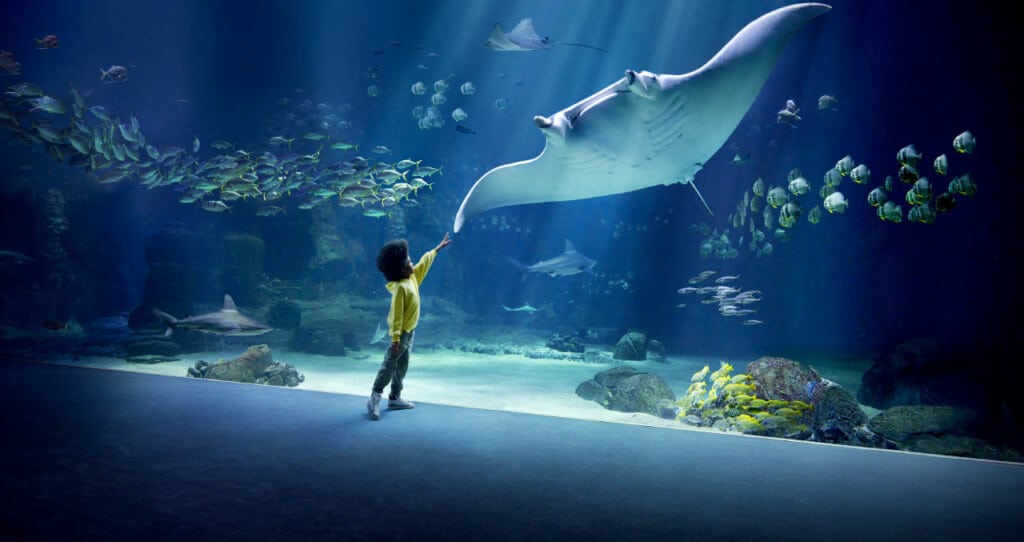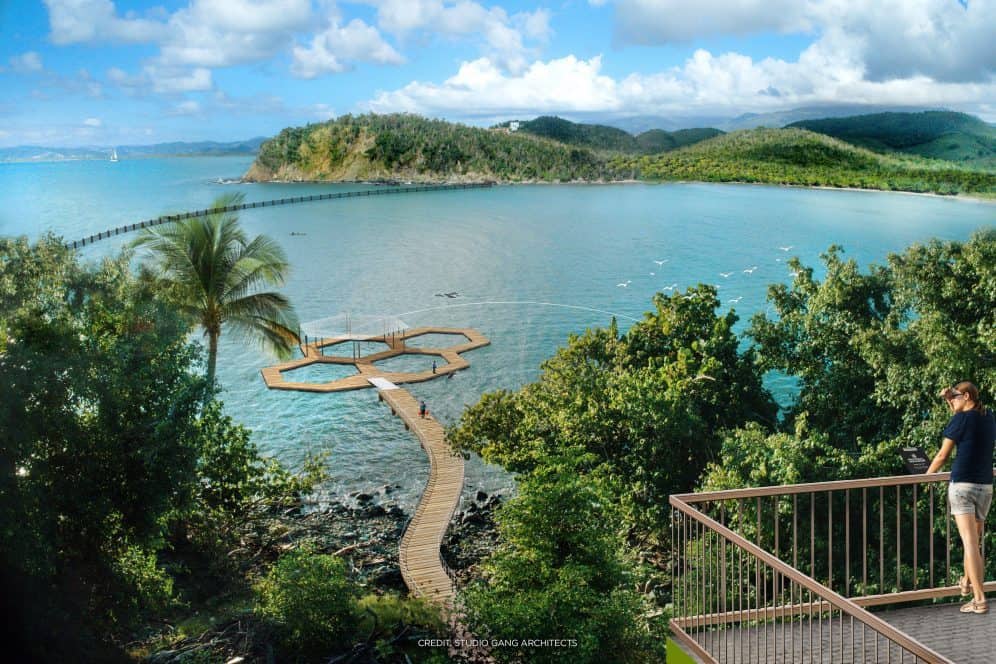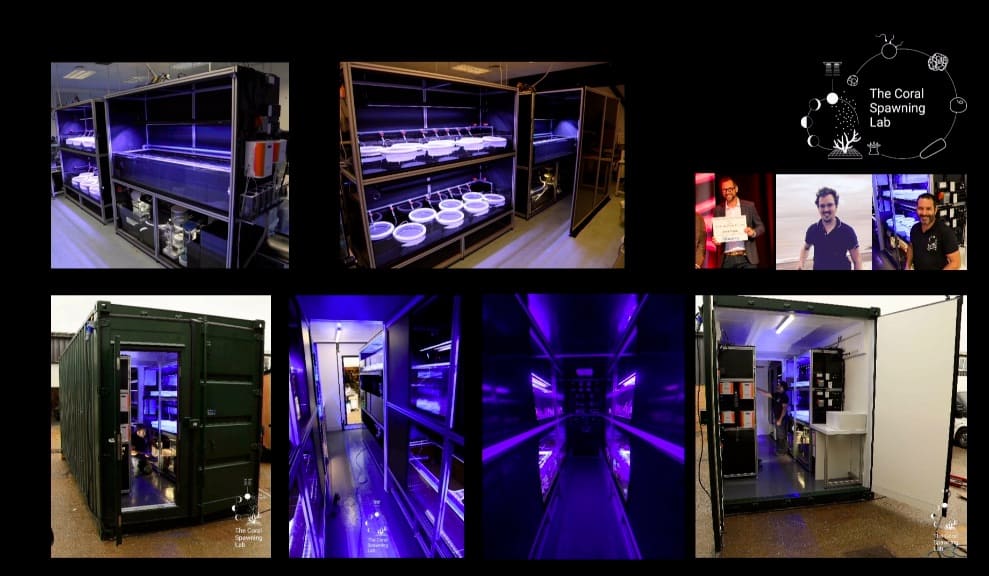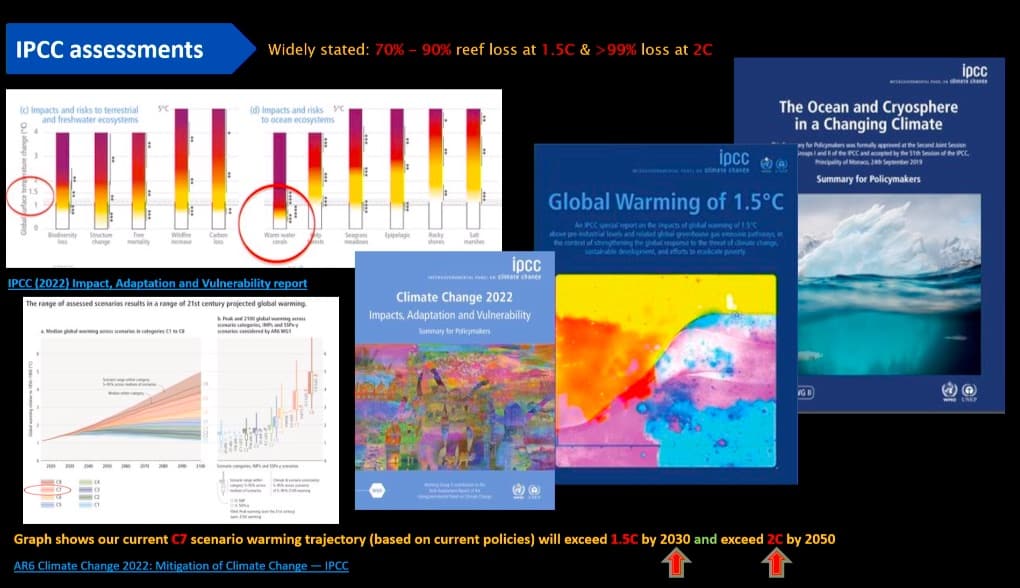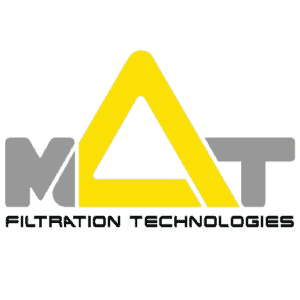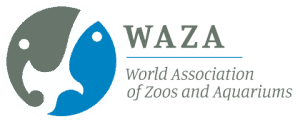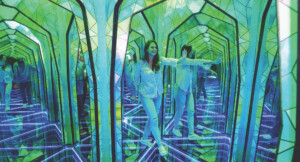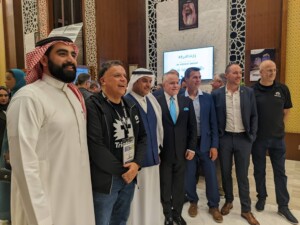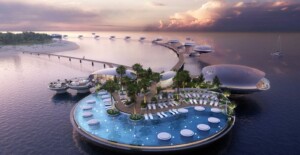The International Aquarium Congress 2022 (IAC) was hosted by Nausicaa, the French National Sea Centre and the biggest aquarium in Europe in Boulogne sur Mer, France. This was the 11th IAC. A virtual conference also took place alongside the event, from 30 October to 4 November 2022.

Over 250 public aquarium professionals came from around the world to network, as well as to share their experiences, commitments and innovations. The content covered seven broad themes. These were:
- Animal care
- Conservation
- Reproduction
- Education
- Raising awareness and mobilisation
- Production of cultural and scientific content
- Examples of positive collaborations with aquariums
- The role of aquariums in society
The International Aquarium Congress 2022
France’s biggest fishing port, Boulogne is also a Ville d’Art et d’Histoire (City of Art and History). It is home to a beautiful fortified city, a UNESCO World Heritage-listed belfry and the Basilica of Notre Dame. Its world-class aquarium, the thirty-year-old Nausicaa, proved to be a spectacular venue for the event. Plus, its team were also warm and generous hosts.
The importance of aquariums
With trust in politicians, governmental institutions, and the media at an all-time low, aquariums, alongside museums and zoos, are a trusted authority. As such, they have a vital role in educating their visitors about conservation, biodiversity and the challenges facing us all from man-made climate change.

Sponsors of the IAC 2022
As the world’s leading event for aquarium professionals, the International Aquarium Congress 2022, attracted sponsors from across the sector. These included The European Union of Aquarium Curators, MAT Filtration Technologies (Platinum), ELSS Group, Pangea Rocks and Species 360 (Gold) as well as Clear Reef (Silver). Blooloop was proud to be the media sponsor for this important event.
It shouldn’t happen to an aquarist
Over four days delegates networked with and learned from their peers, and also shared best practices, initiatives and developments. Here are some of the highlights.
In “Open surgeries in closed systems” aquatic vet Marton Hoitsy of Budapest Zoo and Gardens, outlined a few of his recent cases. An entertaining session, it was a Hungarian version of All Creatures Great and Small. But instead of the Yorkshire Dales, the setting was one of the oldest zoos in the world. His patients included a pebble-eating koi carp and a freshwater stingray injured during an act of amour.
Rob Hicks of SEA LIFE and John Racanelli of Baltimore Aquarium both spoke in, “Whale and Dolphin Sanctuaries: A New Approach to World-Class Care, Welfare and Public Education”. They each take part in high-profile sanctuary projects for marine mammals.
With SEA LIFE, this was the creation of the beluga sanctuary in Iceland. This ambitious project began a decade ago. In 2012, Merlin Entertainments (owners of the SEA LIFE chain of aquariums) bought Changfeng Ocean World aquarium in China. This purchase included two captive belugas.

Feeling strongly that cetaceans should not be on display at public aquariums, Merlin and the SEA LIFE Trust developed a groundbreaking plan.
They took the two belugas on a 6,000-mile journey to a remote, open-water sanctuary. This is in a bay off the southern coast of Iceland. It was the first time that captive beluga whales had ever been released to an ocean sanctuary.
John also talked delegates through the plans to create a dolphin sanctuary in the Caribbean.
As with the beluga project, his team had carried out an extensive search for bays that would work. They looked at hundreds until they found the ideal site. For both projects, there is little access for the public. This is because they are very much designed with the welfare of the animals in mind. “They are sanctuaries, not exhibits,” said John.
Cleaner wrasse behaviour
Then, in a fascinating session at the International Aquarium Congress 2022, Taissa Faust of Tierpark Hagenbeck discussed her work with the Blue-streak cleaner wrasse (Labroides dimidiatus). She had focussed on the complex natural behaviour exhibited by the cleaner wrasse in a reef aquarium environment.
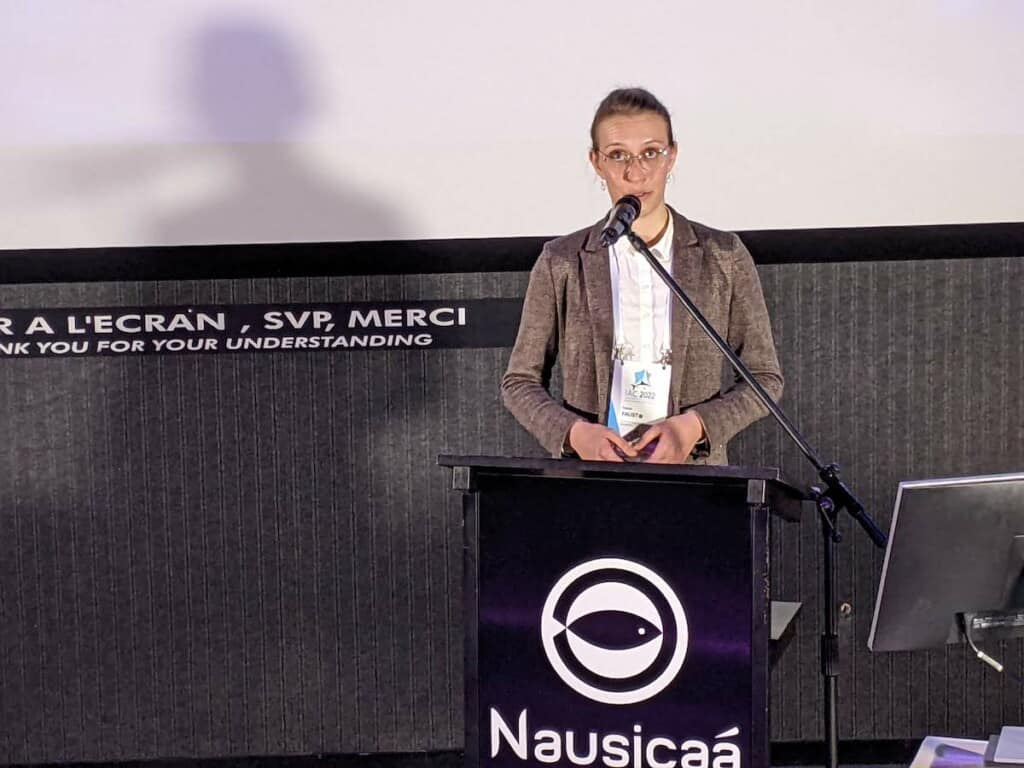
The wrasse service their clients, occasionally bite them and cultivate their larger and more important clients (more parasites to eat) with massages and tactile stimulation.
Clients are more likely to return after a good experience. If a client has been bitten during a visit, the wrasse will give that same client a longer massage on its next visit.
There is skulduggery too, Sometimes neighbouring wrasse nip and bite another wrasse’s client, making the client less likely to return to the original wrasse for the next visit (and more likely to visit its neighbour).
Into the Deep
John Hoech and Beth Redmond- Jones showcased the newest exhibit at Monterey Bay Aquarium, Into the Deep: Exploring Our Undiscovered Ocean.
John, VP of animal care, first highlighted some of the extraordinary animals featured in the exhibition. These include foot-long giant isopods (which this writer at first assumed were animatronics), a lumpy pancake-shaped octopus and a tiny, angelic-looking creature that is anything but angelic when it eats.
John also explained that Monterey Bay is right by one of the largest underwater canyons on the West Coast. It’s over 200 miles long and up to 2.5 miles deep.
This means that the aquarium, working alongside its sister organisation, the Monterey Bay Aquarium Research Institute (MBARI) is in an ideal position to research and discover the deep sea environment. MBARI’s technology, including mini remote-operated vehicles, has enabled the team to discover more about the deep sea than ever before.
Beth Redmond-Jones, VP of exhibitions, then explained how the team had brought the deep to the aquarium visitors. Beth’s concern is primarily with how the exhibition works and how visitors engage with and react to it.
Analysis had shown that two-thirds of visitors identified plastics as a threat to the deep sea. Plus some visitors also left with a “compassionate empathy for deep ocean life”. This level of engagement was what the team was hoping for.

Paulina Balbontin Duron of the Michin Aquarium in Guadalajara, Mexico then introduced her facility to delegates. A comparatively new aquarium, it opened in 2017 and is the host of the next IAC in 2024.
International Aquarium Congress 2022 discusses reefs and restoration
In “Towards the development of sustainable coral reef fish collections”, Samantha Guillaume of ZSL and Riaan Boshoff of SEA LIFE talked about the SustaiNable Aquariums Project (SNAP).
This initiative is a collaboration between ZSL, The Deep, Sealife and Bangor University. Aquarists from these institutions are working on improving breeding techniques. This will increase global understanding of marine animals and their breeding cycles.
The aim is to increase the number and diversity of ethically produced coral reef species. This is done by the collection and rearing of eggs spawned in public aquariums. The project will support conservation efforts. It will also help mitigate the damage done to the marine environment by the illegal trade of fish and other aquatic life.
Delegates saw some Egg Collection Units (ECUs), Heath Robinson-style devices that harvest eggs floating in aquarium tanks. To date, the team has been successful in rearing three species of fish, Coral Wreckfish, Golden damselfish and bicolour angelfish.
Six years ago we spoke to Jamie Craggs, aquarium curator at London’s Horniman Museums and Gardens. He had been working to understand the reproductive biology of reef-building corals. In doing so, he had developed techniques to predictably induce broadcast coral spawning events in closed-system aquariums. His work was truly groundbreaking in getting corals to reproduce in an artificial environment.
Jamie spoke at the International Aquarium Congress 2022 about his decade of ex situ broadcast coral spawning. He has created The Coral Spawning Lab, a company that designs and installs bespoke aquaria aimed primarily for the spawning of corals.
To date, they have over 60 systems in 15 locations around the world. Clients include the KAUST: King Abdullah University of Science and Technology as well as the Oceanário de Lisboa and MOTE Marine Lab.
Aquariums and sustainability
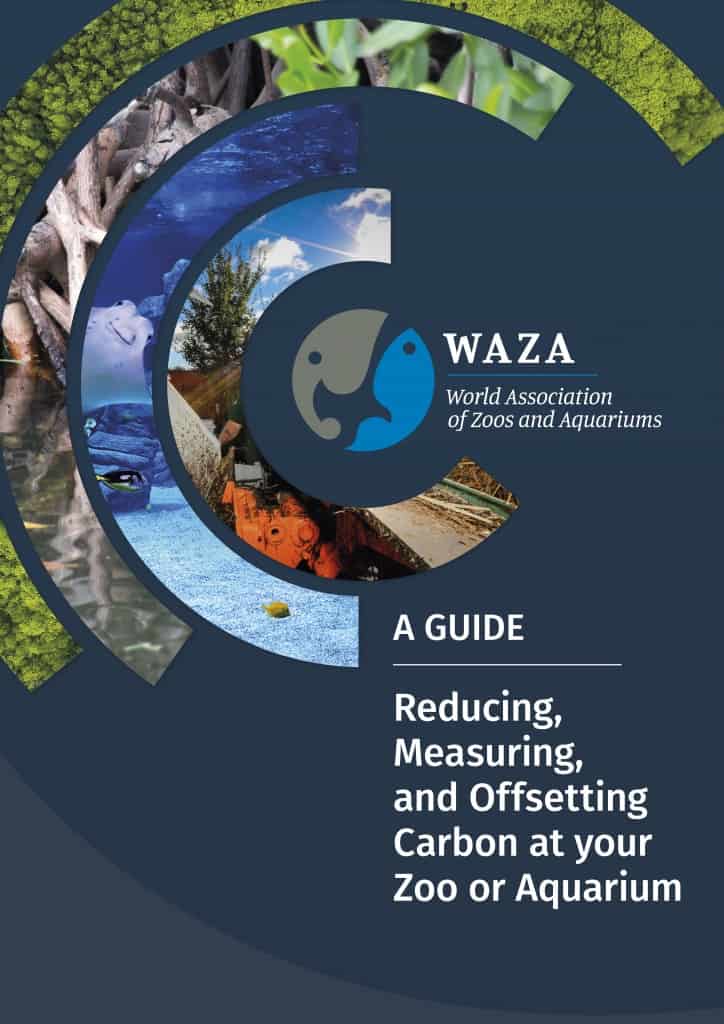
Helen Lockhart is conservation and sustainability manager at Two Oceans Aquarium in Cape Town. She introduced delegates to a new resource from The World Association of Zoos and Aquariums (WAZA). This is “A Guide – Reducing, Offsetting and Measuring Carbon at your Zoo or Aquarium“.
WAZA’s writing team for the guide included Duncan East, Elaine Bensted, Kiam Yoong as well as Helen herself.
A year in the making, the guide will be translated into different languages and will be also available digitally. Designed to be a practical resource, it shows how “regardless of the size of your institution or budget there are many things you can do to get started on your sustainability journey”.
A number of case studies are highlighted. For instance, Marwell Zoo’s Zoo Poo renewable energy initiative and the Aquarium Conservation Partnership. The ACP is a coalition of US aquariums working to conserve ocean and freshwater ecosystems. 24 have made a commitment to become carbon neutral.
Two Oceans Aquarium itself has, among other measures, installed 500 solar panels on its roof. This covers 12% of its energy usage. This has reduced the aquarium’s footprint by 190 tons of carbon emissions.
Seahorses and coral
In a session at the International Aquarium Congress 2022 called “Engaging teams with conservation and development”, Chris Brown, head of marine programs and engagement at SEA LIFE UK talked about conservation work. However, he approached it from a different angle, and focussed on the impact conservation work has on the aquarium staff.
Chris had moved himself and his young family over to Australia for two years to work at Sydney Aquarium. While there he was involved with a number of key conservation activities which involved his team actively working in the field with various animals.
From collecting rubbish in Sydney Harbour by kayak (“a nice start”) to rescuing a Grey Nurse Shark trapped in an inland lake, Chris found that such work had a positive impact on staff, helped social media coverage of the aquarium and, in addition, aided recruitment. After all, as a study Chris highlighted showed, the overwhelming number of people working in aquariums do so because they want to work with animals and help in conservation efforts.
He did add that one issue is that if you send some of the team out on project work and expeditions it can cause an issue with backfilling. This is also something to be aware of.
One key initiative has been the Sydney Seahorse project. Breeding and releasing seahorses into the harbour, into specially made “seahorse hotels” has been a successful and rewarding endeavour. Tracking has revealed that some of the released individuals (and they can identify over 90!) are now pregnant.
“Not just another day a the office, we all get to do incredible things with nature – what a privilege.”
Chris also suggested that aquarium curators and directors should:
“Think back to your best-ever work days and think about how you can help your team find theirs.”
Exploring climate change and coral at International Aquarium Congress 2022
Paul Pearce-Kelly is senior curator of invertebrates and fish at London Zoo (ZSL). He spoke about how the public aquarium community is “uniquely placed” to help in the battle to save coral reefs.
First, he set the scene by detailing the challenges the marine environment and coral reefs in the particular face because of man-made climate change.
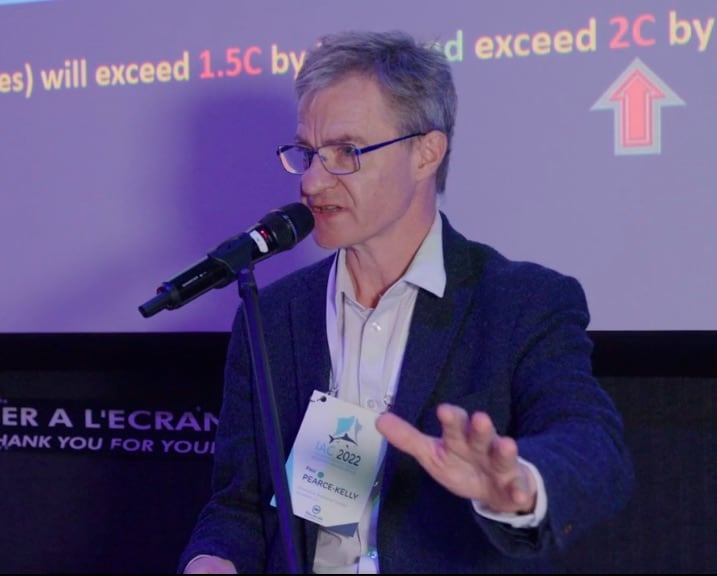
Discussing the serious threat to coral reefs, he then said:
“When we assess the threat to coral through climate change it’s often done through the lens of thermal stress and temperature. But of course, there are many other stresses that need to be taken into account and they are all highly interactive”.
He listed, among others, ocean acidification, deoxygenation, storms and sea level rises, as well as diseases, salinity and invasives.
Paul then showed the new reef tank at London zoo. He pointed out that of the hundred-plus species in the display only one had IUCN Red List status as endangered. Bearing in mind the immense threats to reefs worldwide, he asked, “does this reflect reality?”
Thanks to Nausicaa, hosts of the International Aquarium Congress 2022
Finally, at the post-conference Gala Dinner, delegates ate in front of Nausicaa’s huge High Seas tank. Meanwhile, a mariachi band played giving a flavour of the next IAC in Mexico.
Nausicaa is not just a huge and impressive aquarium. I was struck by the warmth of our hosts. Everyone from the directors to the front-of-house staff and the aquarists made us all feel welcome.
The International Aquarium Congress 2022 was professionally run and seamlessly delivered, and the aquarium itself is also quite spectacular. Like a Lutjanus kasmira after a massage and a clean from a Labroides dimidiatus, I am already looking forward to my next visit.

